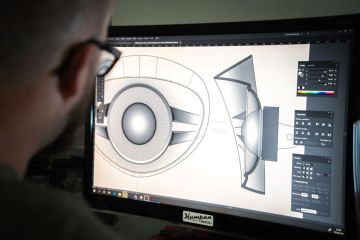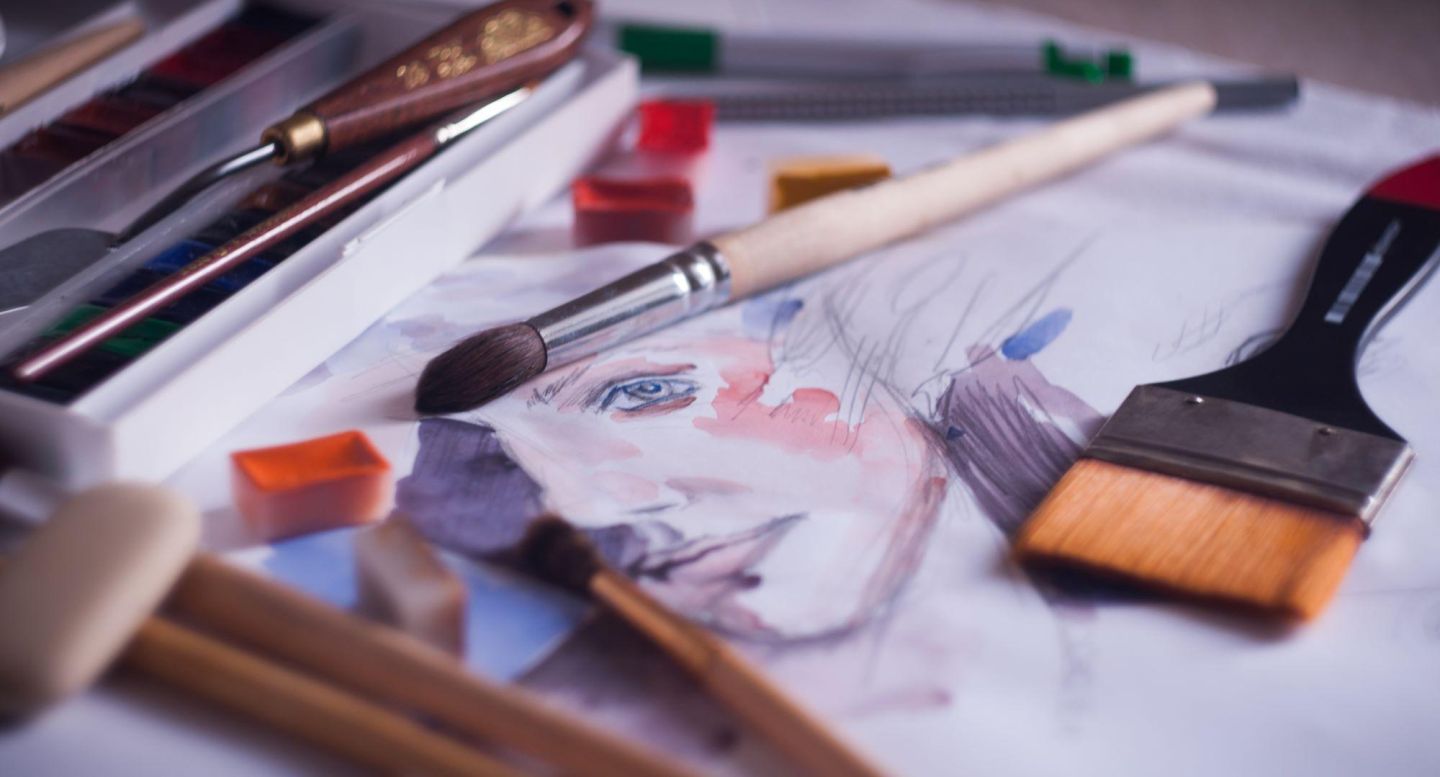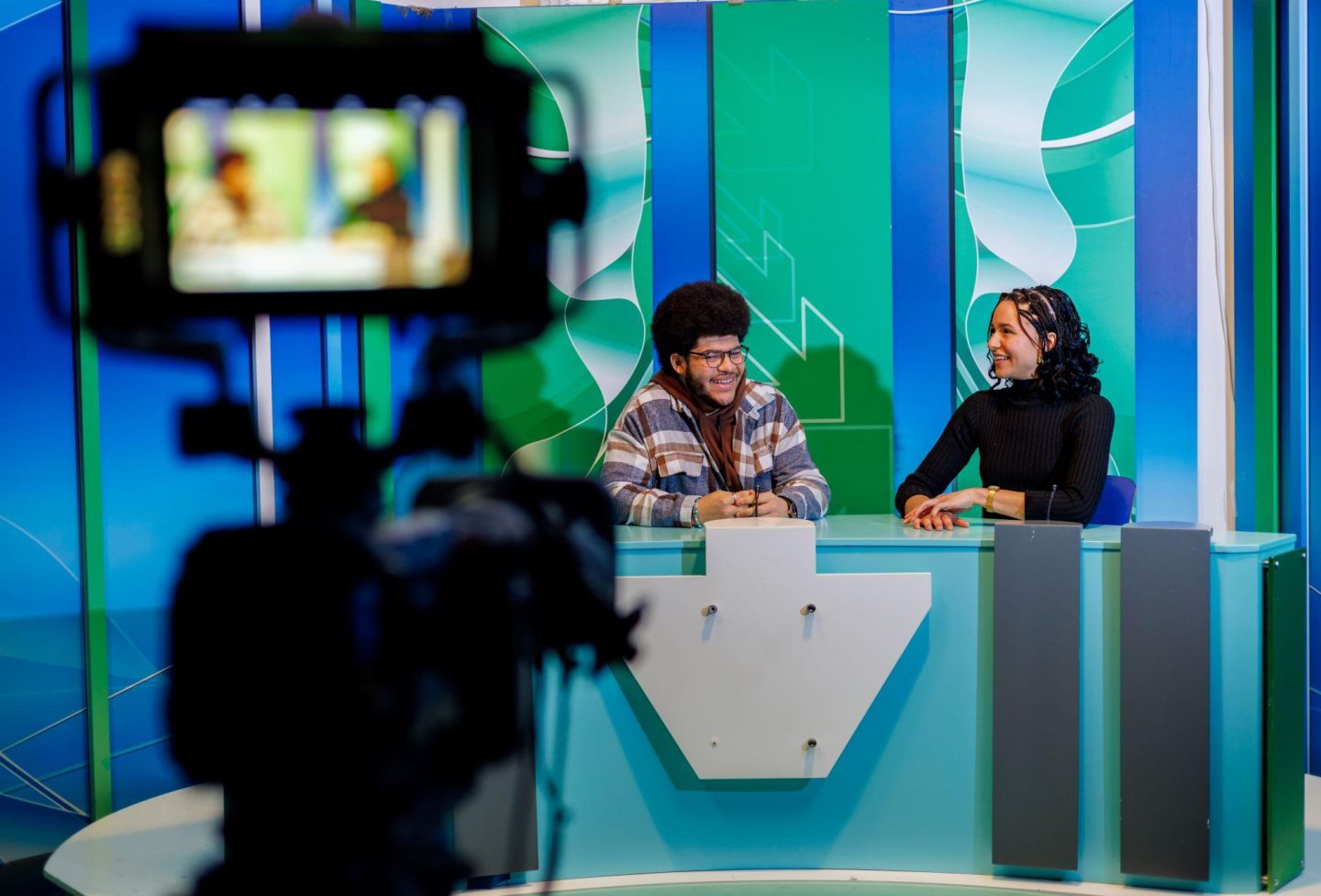
What is the Course about?
You can think of creativity as applied imagination. - Ken Robinson
You can think of design as applied creativity. Design is everywhere
Combining technical know-how, creativity and an appreciation of style good design can make our use of everyday products, apps and services clear efficient and pleasurable. The great thing about being a designer is that you are never limited because everything we create requires design from a website through to a double decker bus. Think of all the things you use every day, apps, mobile phones, headphones, websites, cars, medical devices and so much more.
Design spans everything from physical products, application interfaces, packaging to signage and visual communication. Design as a disciple sits at the intersection of Psychology, Art and Engineering where understanding people's needs and understanding what is possible are combined creatively to offer new and exciting solutions. Be inspired by product designers like Ross Lovegrove, Dieter Rams, Neri Oxman, Hartmut Esslinger and Monika Mulder.
On the course you learn the skills of being a designer, sketching, model making/prototyping, creative problem solving, visual communication and working as part of a team. You will be using programmes like Solidworks, Photoshop, Illustrator, In Design and more.
This course was the first of its kind nationally and has 50+ years' experience in design education. We use studio-based education, a dedicated space where students work together on their designs and learn through making and doing. The student staff ratio is approx. 1:10 which means you get very high contact time with lecturers supporting and guiding you through your design development.
Course Structure
This is a three-year level 7 degree with the first two years being core, where you learn the skills and processes needed in Design. The course is project focused where you learn through doing. While supported by traditional lectures the majority of your time is working on projects in studio with individual and groups tutorials to guide your designs. It is 100% continuous assessment with no formal written exams.
Year 3 offers the opportunity of work placement with exciting design companies or travelling to a European University to study design. The course also has strong links with industry and runs live projects with companies across all 3 years.
In the final year of the course, you get to design a range of product, services and visual communication assets which you compile into a high-quality portfolio document to showcase your work.
Is this course for you?
If you are interested in creative problem-solving tasks that focus on the development of products and services that address real-world, If you think visually and like to take a hands on approach to problem solving. Then design is the course for you.
The course builds on skills you may have developed in DCG, Art, Technology, Engineering or Construction.
Special Features:
- The programme is hands on and practice based with all learning being project-based in a studio environment. Assessment is 100% continuous assessment centred around core design projects. The course structure encourages collaborative design for creative solutions. The course covers the full spectrum of design from sketching, modelmaking, CAD, prototyping and on to the pre-engineering phase of product development. This is enhanced by the planning, enterprise and entrepreneurship skills to launch products in a commercial environment.
- Facilities for students include a fully equipped dedicated model making workshop, customised design studios, dedicated access to computing and industry standard design software (Solidworks, Photoshop, Illustrator, In Design), printing/plotting resources, multiple 3D modelling and rapid-prototyping solutions.
- The programme has built in opportunities for industry work placement and study abroad. Through the course students have a chance to build strong relationships with industry through live projects and placements. These links prove valuable when seeking onward employment.
- SHOWCASE and exhibition of work occurs throughout the course with a major design showcase hosted by the University every year allowing students to present their work to industry, commercial partners, agencies and the community.
- Exit award - Higher Certificate in Arts in Industrial Design (NFQ Level 6) after Year 2
Year 1
| Semester 1 | Semester 2 |
|---|---|
| Digital Presentation (M) | Digital Communications (M) |
| Digital Modelling and Materials (M) | Digital Modelling and Process (M) |
| Design Discourse (M) | Design Studio 1 (Skills and Process) (M) |
| Workshop Practice (M) | Design Trends (M) |
| Ergonomics and Model Making (M) |
M is a mandatory subject - E is an elective subject
Year 2
| Semester 3 | Semester 4 |
|---|---|
| Working Prototypes (E) | Design Specification (E) |
| Brand Realisation (E) | Modelling for User Validation (E) |
| 3D Modelling (E) | Design Theory, Methods and Applications (E) |
| International Design Movements (E) | Design Studio 2 (Design for Industry) (E) |
| Design for Manufacture (studio) (E) | Personal and Commercial Visualisation (E) |
| Design Live Project (Studio) (E) |
M is a mandatory subject - E is an elective subject
Year 3
| Semester 5 | Semester 6 |
|---|---|
| Data Visualisation (E) | Digital Publication (E) |
| 3D Rapid Prototyping (E) | Design Studio 3 (Industrial Design) (E) |
| Modelling Design Features (E) | Surface Finishing and Detailing (E) |
| Design, Culture and Society (E) | Form and Specification (E) |
| EDU+ (academic) (E) | Academic Research Writing (E) |
| EDU (work Elective) (E) | Design Studio 3 (Artefact UX Design) (E) |
M is a mandatory subject - E is an elective subject
What are the minimum entry requirements?
5 subjects: O6/H7
English or Irish: O6/H7
Mathematics: O6/H7
What follow-on study opportunities are available?
The course is structured to allow multiple pathways for students. With embedded exit award at level 6 and the opportunity to transfer directly to the level 8 Product Design Innovation degree on successful completion of this level 7. Students can also transfer to other disciplines of design internally in SETU or other universities to follow an alternative career path.
What exemptions will I receive?
Transfer from another University: if you have accreditation from a university for previous years of study on a course with similar learning outcomes and approach, you can apply for exemptions in those years under recognition of prior learning. You will be asked to provide a portfolio of work so a decision on an appropriate level can be made.
Notes
International students are always welcome, and we offer 1 and 2 semester opportunities in Year 3 of the programme. For more information please contact the programme director or the SETU international office.What will I be able to do when I finish the course?
Our graduates are employed across a wide range of sectors, from services and manufacturing to hi-tech and pharmaceuticals. Specialisms include: product and industrial design consultancy; furniture and environmental design; visual communications; packaging and the print sectors; web; digital technologies and user-experience (UX).
The course is set up to provide graduates with the maximum opportunity to gain employment in multiple fields. The skills learned in design have been identified as the skills of the future and required by all industries. These transferable skills is what makes our graduate highly employable.
- Critical Thinking
- Work in Teams
- Creativity
- Complex Decision Making
- Problem Solving
With these skills our graduates are being sought after to work in fields like UX Design (User Experience), Medical Device design, Web and App development, environmental design, furniture design and more. They are also getting employment in non-traditional design areas because of the broader recognition of the value a design led problem solving approach.
Course Leader









